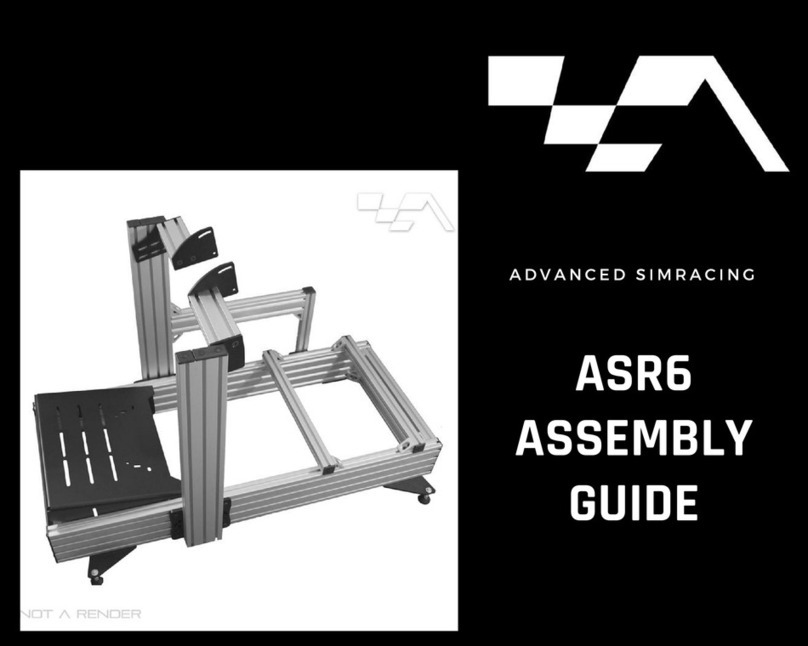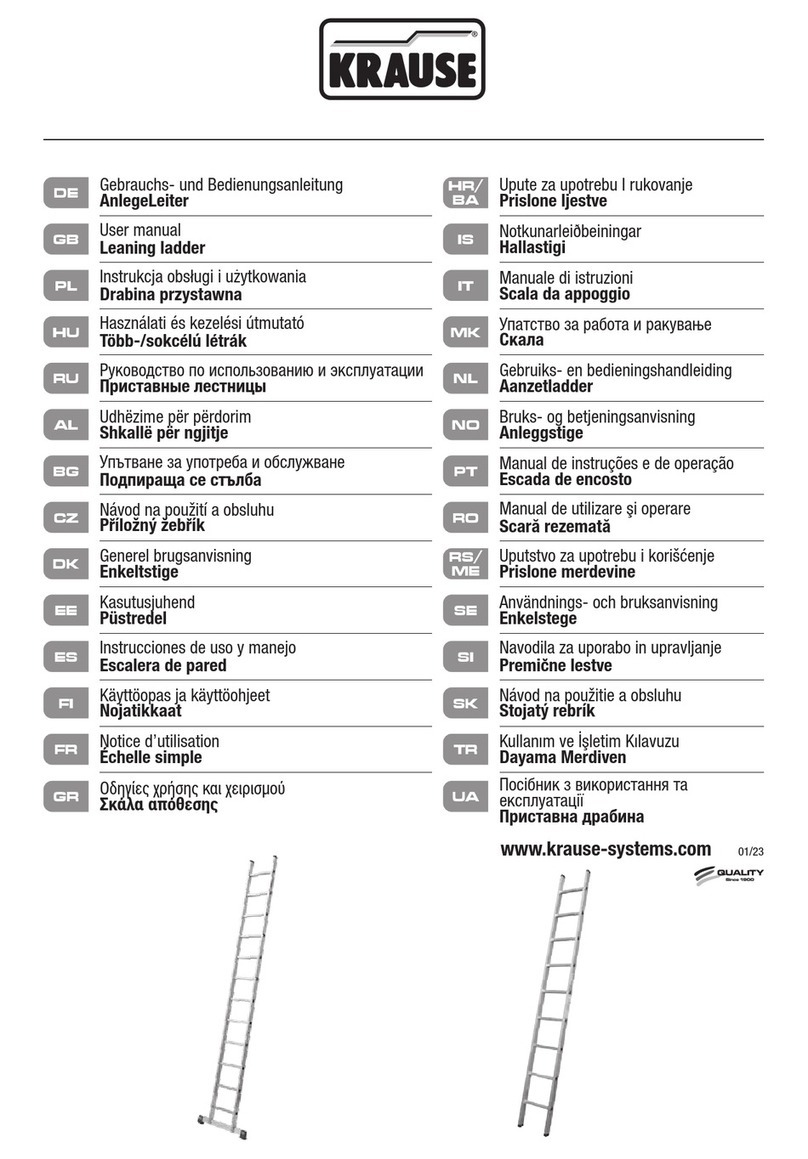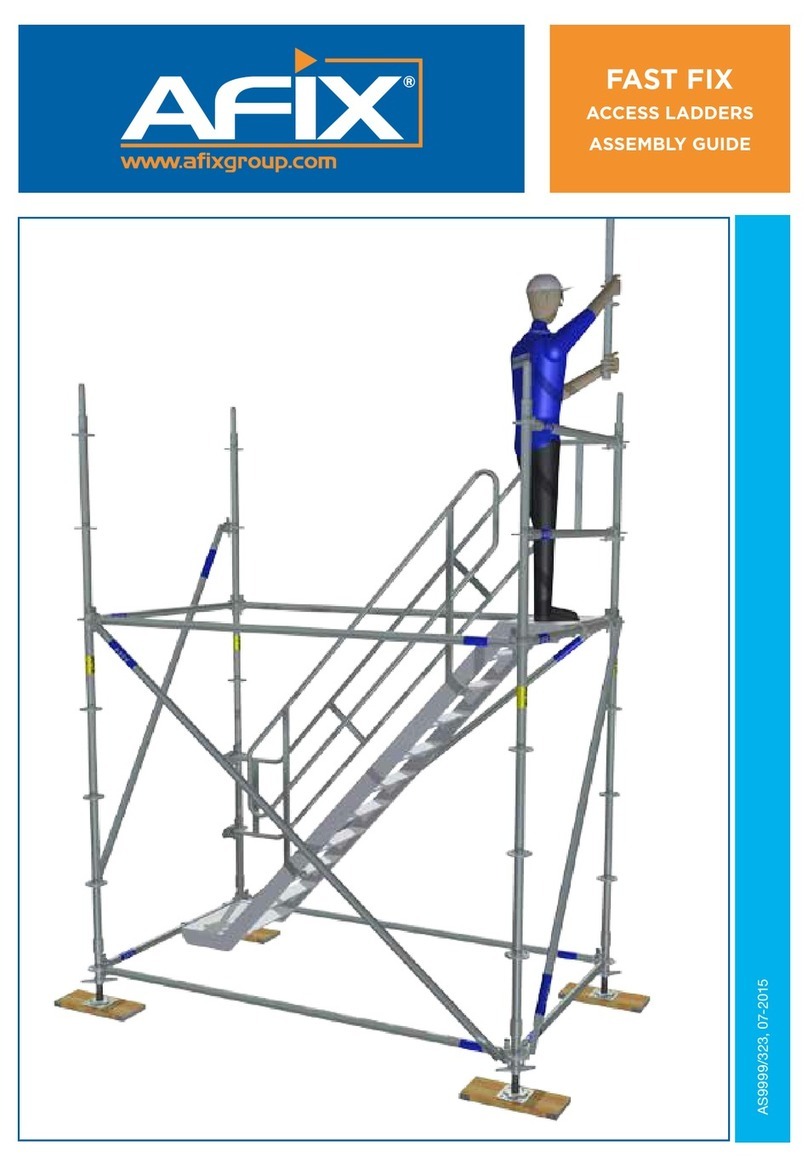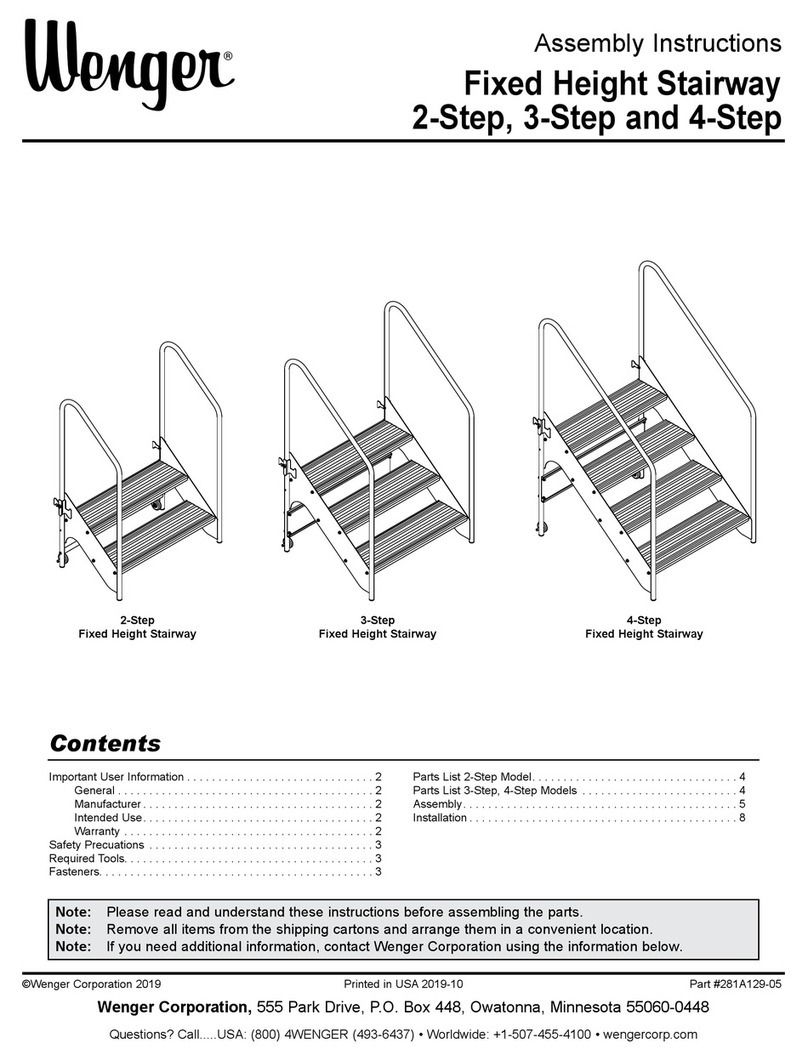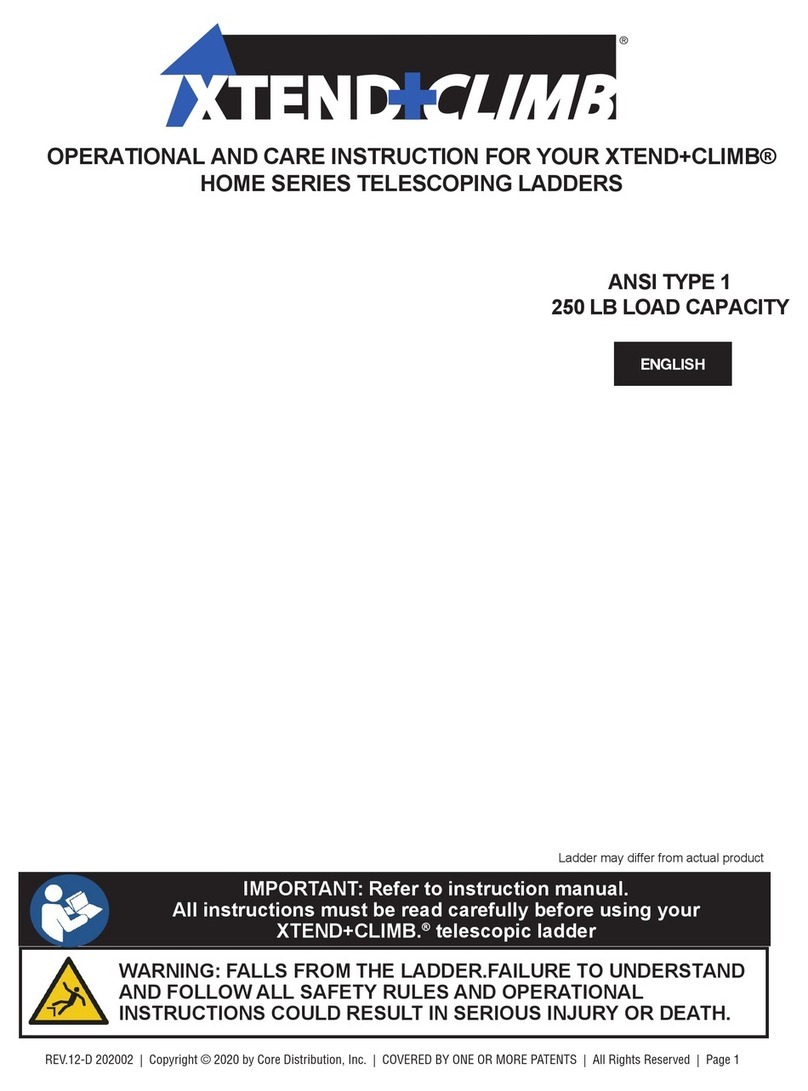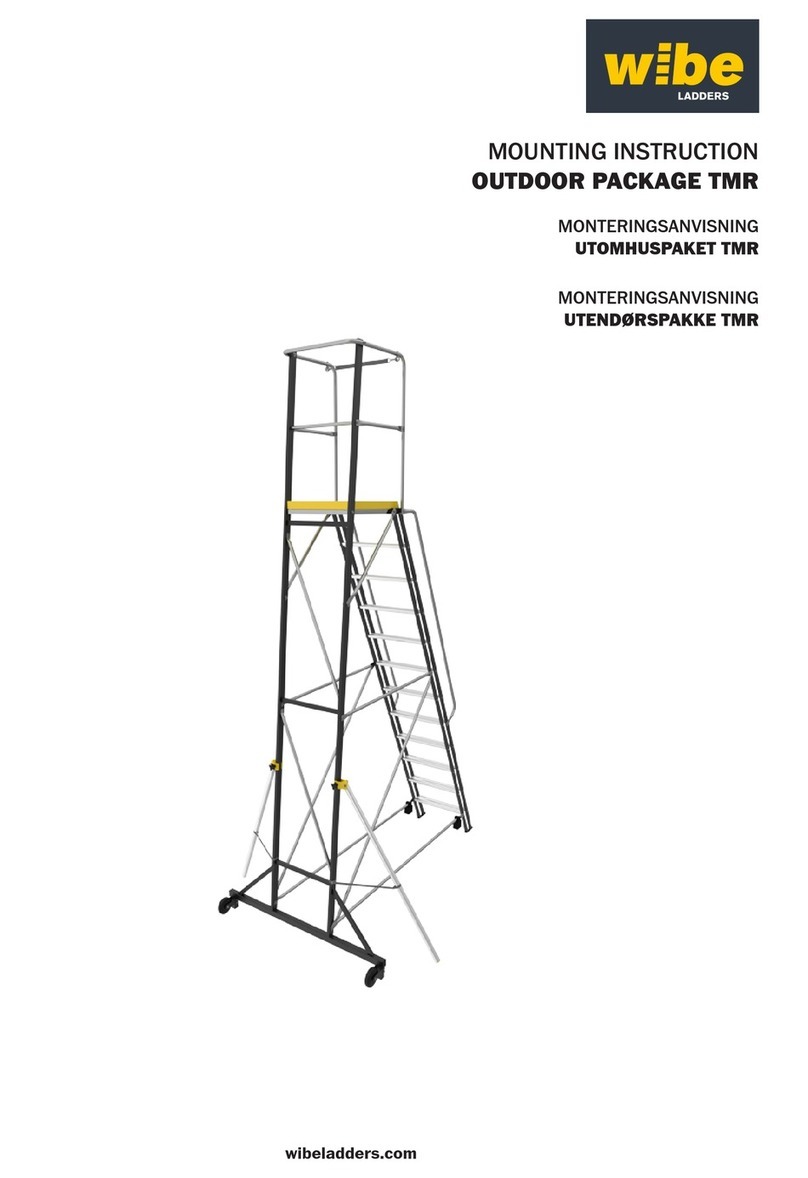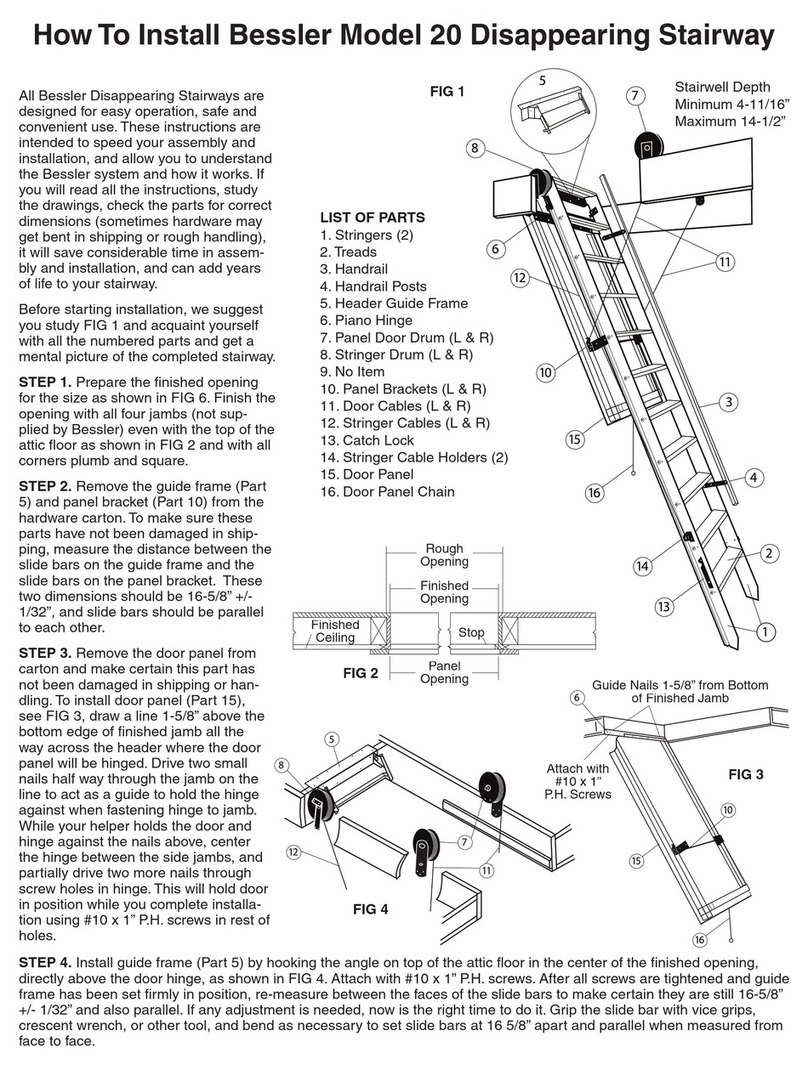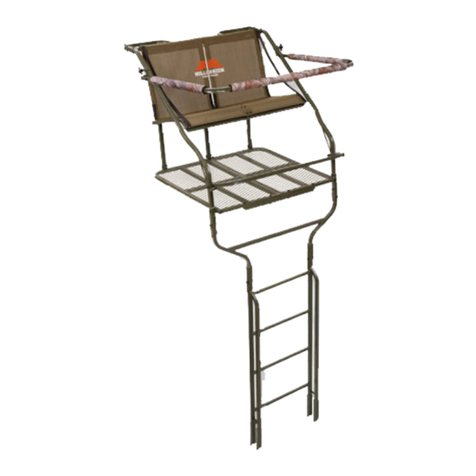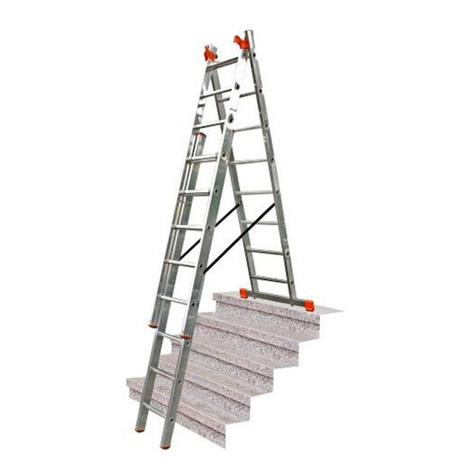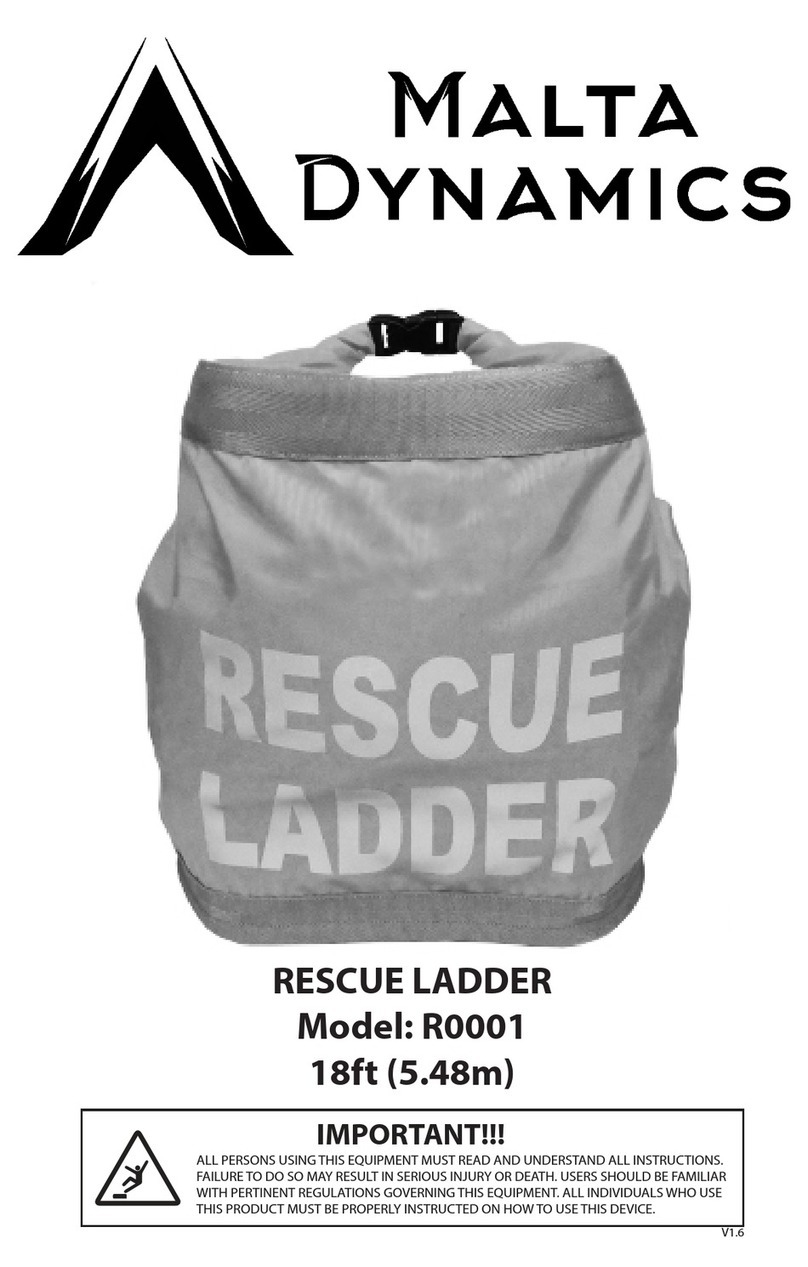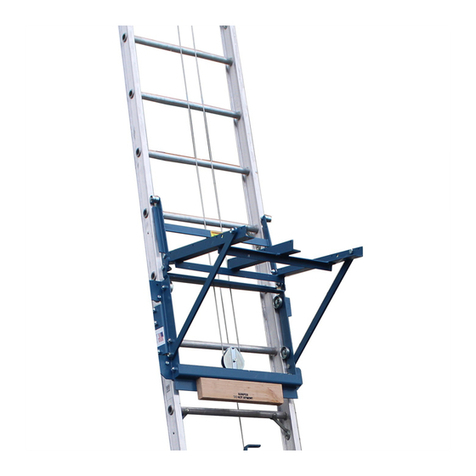
REV.12-D 202002 | Copyright © 2020 by Core Distribution, Inc. | COVERED BY ONE OR MORE PATENTS | All Rights Reserved | Page 5
LIST OF ITEMS TO BE INSPECTED
For regular inspection, the following items shall be taken into account:
• Check the ladder on purchase and prior to each usage.
• Check that the stiles/legs (uprights) are not bent, bowed, twisted, dented, cracked, corroded or rotten.
• Check that the hinges between front and rear sections are not damaged, lose or corroded.
• Check that the locking stays horizontal, back rails and corner braces are not missing, bent, loose,
corroded or damaged.
• Check that the rung hooks are not missing, damaged, lose or corroded and engage properly on the rungs.
• Check that guide brackets are not missing, damaged, lose or corroded and engage properly on the mating stile.
• Check that the entire ladder is free from contaminants (e.g. dirt, mud, paint, oil, grease, wet paint or snow).
Do not use ladder if contaminated.
• Check that the ladder is suitable for the task. Use a ladder only for the tasks for which it has been designed.
• Check your surroundings when erecting the ladder. Take the necessary precautions to ensure your own safety and
that of others when erecting and using a ladder at entrances, in passageways, etc.
All checkpoints according to EN131-6: 2019, Annex A shall be mentioned when applicable.
Futhermore the following checkpoints shall be added:
• Check the brackets on cracks and other failures, such as:
• For professional use a risk assessment shall be carried out respecting the legislation in the country of use.
• Do not modify the ladder design.
• For outdoor use caution to the wind.
• Only climb the side of the ladder that has lighting latches, lock indicator windows and stickers.
• Do not spend long periods on a ladder without regular breaks (tiredness is a risk).

